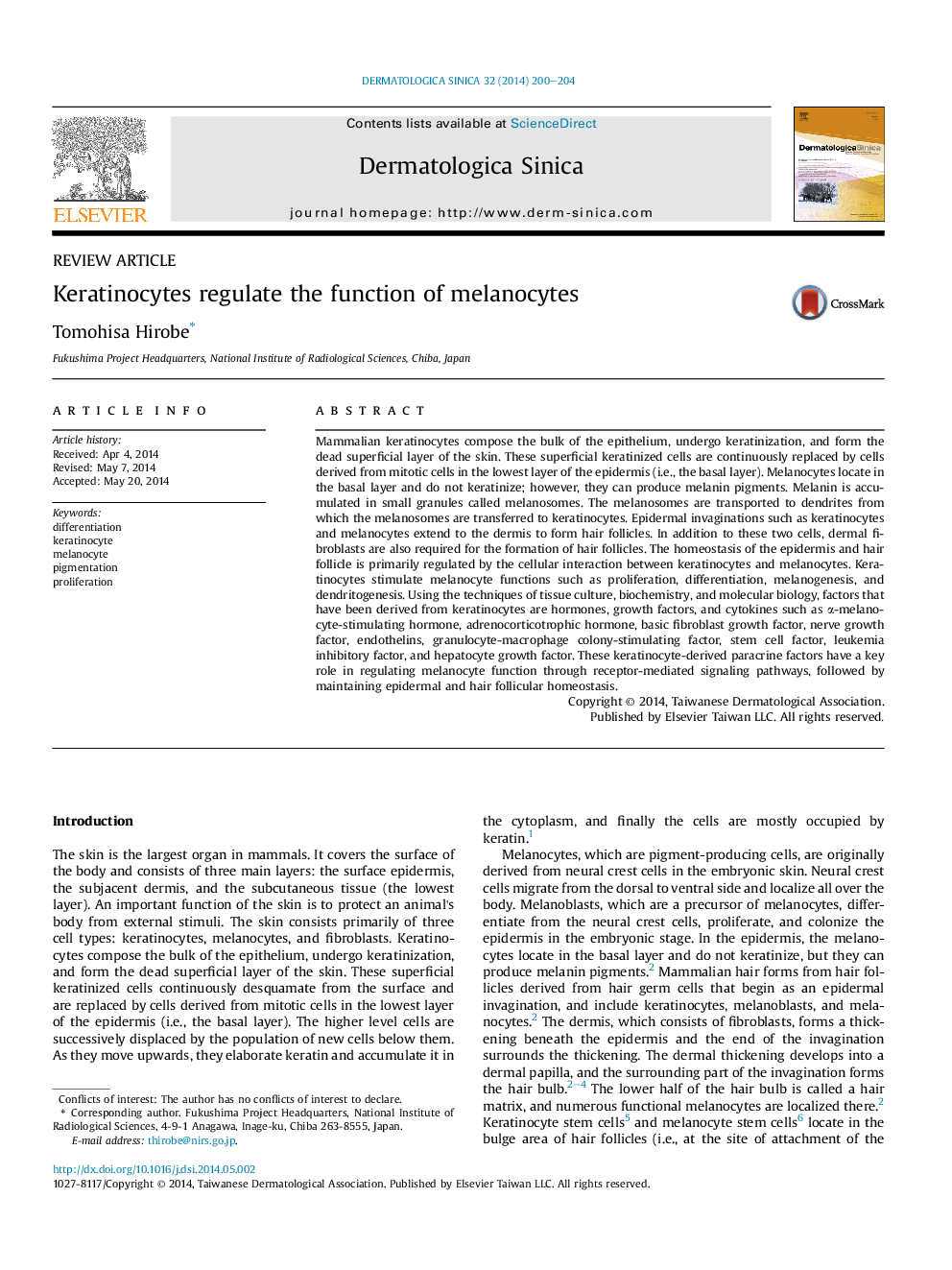| Article ID | Journal | Published Year | Pages | File Type |
|---|---|---|---|---|
| 6062252 | Dermatologica Sinica | 2014 | 5 Pages |
Abstract
Mammalian keratinocytes compose the bulk of the epithelium, undergo keratinization, and form the dead superficial layer of the skin. These superficial keratinized cells are continuously replaced by cells derived from mitotic cells in the lowest layer of the epidermis (i.e., the basal layer). Melanocytes locate in the basal layer and do not keratinize; however, they can produce melanin pigments. Melanin is accumulated in small granules called melanosomes. The melanosomes are transported to dendrites from which the melanosomes are transferred to keratinocytes. Epidermal invaginations such as keratinocytes and melanocytes extend to the dermis to form hair follicles. In addition to these two cells, dermal fibroblasts are also required for the formation of hair follicles. The homeostasis of the epidermis and hair follicle is primarily regulated by the cellular interaction between keratinocytes and melanocytes. Keratinocytes stimulate melanocyte functions such as proliferation, differentiation, melanogenesis, and dendritogenesis. Using the techniques of tissue culture, biochemistry, and molecular biology, factors that have been derived from keratinocytes are hormones, growth factors, and cytokines such as α-melanocyte-stimulating hormone, adrenocorticotrophic hormone, basic fibroblast growth factor, nerve growth factor, endothelins, granulocyte-macrophage colony-stimulating factor, stem cell factor, leukemia inhibitory factor, and hepatocyte growth factor. These keratinocyte-derived paracrine factors have a key role in regulating melanocyte function through receptor-mediated signaling pathways, followed by maintaining epidermal and hair follicular homeostasis.
Related Topics
Health Sciences
Medicine and Dentistry
Dermatology
Authors
Tomohisa Hirobe,
